You've probably heard of Chamois hunting and instantly think of New Zealand.
You are correct hunting Chamois in New Zealand is a great experience and very well know with mountain hunters from the US.
But did you know there are 11 species of Chamois found around the world?
All across Asia and Europe there are great opportunities to hunt Chamois!

Alpine Chamois
DESCRIPTION (male) Shoulder height 28-31 inches (71-79 cm). Weight 65-110 pounds (29-50 kg).
Summer coat is light brown. Winter coat is very dark brown to black, contrasting sharply with white areas of head, throat and rump, and with the dark facial mask very pronounced.
DISTRIBUTION & TAXONOMIC NOTES Indigenous Alpine chamois (R. r. rupicapra) are found in the Alps of southeastern France, northern Italy, Switzerland, southwestern Germany, western Austria and Slovenia. They have also been introduced in a number of places in France, Italy, Germany, the Czech Republic, Slovakia and Slovenia.
For now, we lump the Tatra chamois (R. r. tatrica), from the Tatra Mountains of Poland and Slovakia, with Alpine chamois because introductions of the latter have been made near Tatra chamois populations in Slovakia and it is possible they may have interbred. Scientists separated the Tatra chamois from the Alpine chamois in 1972 because of its larger skull and certain other cranial measurements, its somewhat different coloration, and its different ecological requirements. Its horns, however, are about the same size as those of the Alpine chamois.
The Polish population of Tatra chamois, which is totally protected, is found only in Tatra National Park on the border with Slovakia, where its numbers have dropped to fewer than 200 because of habitat loss, poaching and disturbance from tourists. Tatra chamois number fewer than 1,000 in Slovakia, where they are native to the area within Tatra National Park adjacent to Poland, and were introduced in Low Tatra National Park to the south, where their genetic purity is threatened by interbreeding with introduced Alpine chamois.
For record-keeping, we treat all populations of Alpine (including Tatra) chamois as indigenous.
STATUS Alpine chamois numbers are estimated at around 400,000. Stable and increasing.
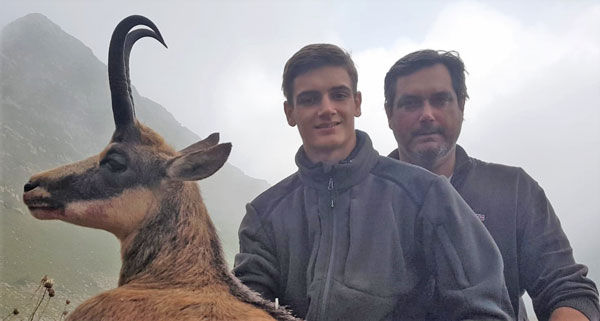
Anatolian Chamois
Rupicapra rupicapra asiatica
Also called Turkish chamois.
DESCRIPTION Shoulder height 28-30 inches (70-76 cm), weight about 80 pounds (36 kg). The female is somewhat smaller.
General color is a dark, smoky brown with a broad, black dorsal stripe. Neck and legs are blackish-brown, being darker than in most European races. Underparts are pale, rump is white. Throat, lower jaw, and front of face are white, and there are dark stripes across the eyes to the muzzle. In this subspecies the horns are relatively short and thin.
DISTRIBUTION Northern and eastern parts of Anatolia (Asian Turkey). The type specimen was described from near the city of Trebizond on the Black Sea.
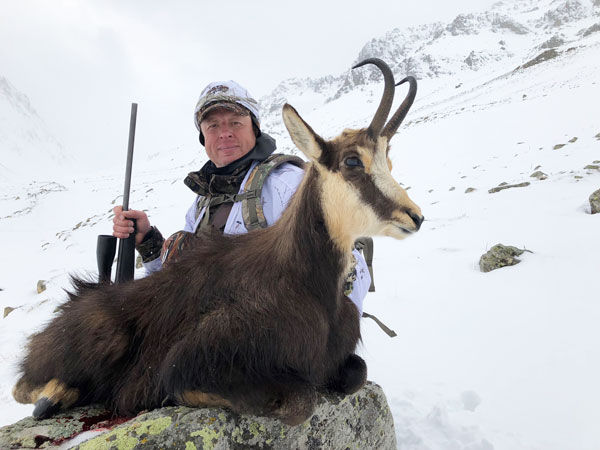
Balkan Chamois
DESCRIPTION Somewhat larger than the Alpine chamois, with longer horns.
DISTRIBUTION Albania, Bulgaria, Greece, and various parts of the former Yugoslavia including Croatia, Bosnia & Herzegovina, Serbia, Voivodina, Montenegro, Kosovo, and Macedonia (but not in Slovenia, which has only Alpine chamois).
Indigenous populations of balcanica are found in the central region of Bosnia & Herzegovina, and in southwestern Kosovo near the border with Albania. There have also been introductions of balcanica in parts of Bosnia & Herzegovina, and in parts of Croatia and Serbia where chamois had not previously occurred.
Some say that introductions of Alpine chamois (R. r. rupicapra) have been made in southeastern Montenegro and southwestern Kosovo close to Albania; however, others deny this. While recognizing the possibility of hybrids in these areas, we elect to treat all chamois in the former Yugoslavia (except Slovenia) as Balkan chamois and all populations as indigenous.
STATUS Numbers estimated at 29,000 (1981). Scarce in Greece, where it is heavily poached and subject to predation by feral dogs.
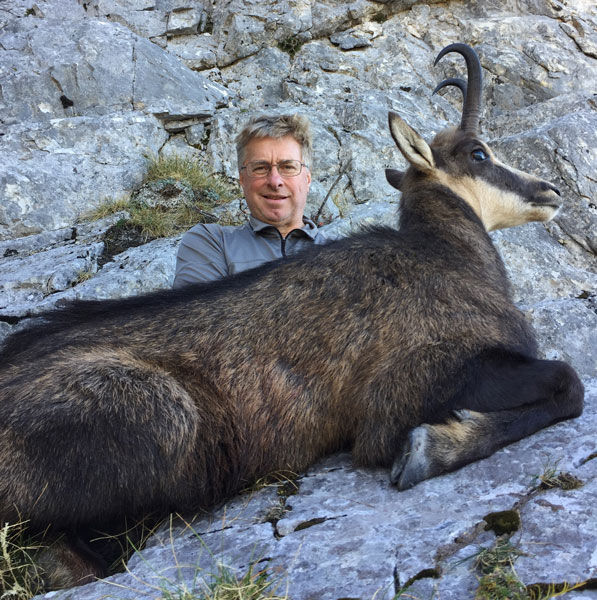
Cantabrian Chamois
Cantabrische Gams (G), Chamois Cantabre (F).
DESCRIPTION (male) Shoulder height about 28 inches (71 cm). Weight 45-75 pounds (20-34 kg).
The smallest chamois, with the lightest coloration. Summer coat is reddish, turning brown in winter. Underparts are pale. Rump, throat, lower jaw and front of face are yellowish. Smaller and paler than the Pyrenean chamois and with shorter, slimmer horns.
DISTRIBUTION Cantabrian Mountains of northwestern Spain.
STATUS Stable, with numbers estimated at 15,000 in 1981.
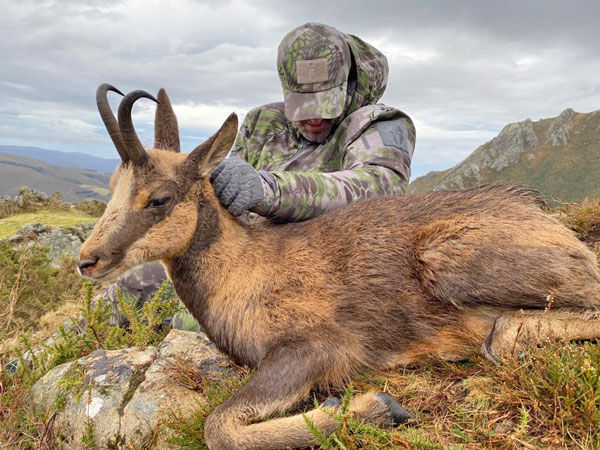
Carpathian Chamois
DESCRIPTION The largest chamois with the longest horns.
DISTRIBUTION Romania, in the Carpathian Mountains and Transylvanian Alps.
STATUS Numbers estimated at 9,000 (1990) and increasing.

Caucasian Chamois
Rupicapra rupicapra caucasica
DESCRIPTION Similar to the Alpine chamois but somewhat smaller, with relatively short, stout horns. Horn lengths from 8-10 inches (20-25 cm) were recorded between 1891-1913 by Rowland Ward.
DISTRIBUTION The Caucasus Mountains of Russia, Georgia and Azerbaijan, and also in the Lesser Caucasus of southwestern Georgia near the Turkish border.
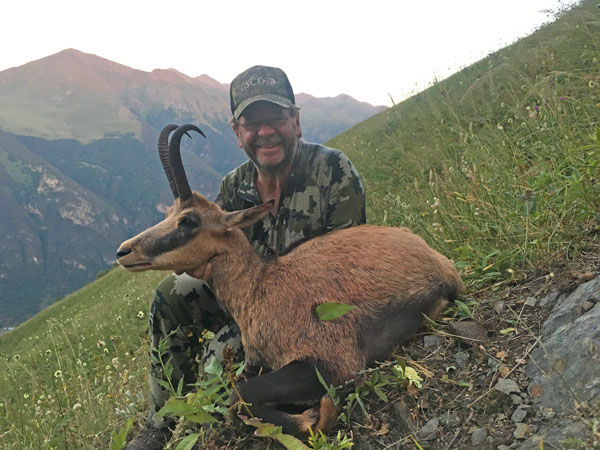
New Zealand Chamois
Rupicapra sp.
Rebeco (Sp), Gams, Gemse (G), Chamois (F). "Chamois" is a French word for wild goat. Even though the chamois is not a true goat, its scientific name is derived from the Latin rupes (cliff or rock) and capra (female goat). Until recently, all chamois were thought to belong to one species; however, scientists now recognize two: the common chamois (Rupicapra rupicapra) of central Europe and the Middle East, and the western chamois (R. pyrenaica) of Spain, adjacent parts of France, and central Italy. The former is believed to be the species introduced in New Zealand.
DESCRIPTION (male) Shoulder height 28-31 inches (70-80 cm). Weight 65-110 pounds (30-50 kg). Females are somewhat smaller.
A graceful, agile mountain animal. The short summer coat is reddish or pale brown. The winter coat of long guard hairs over thick underfur is a dark shade of brown. The underparts are pale, the rump is white. Throat, lower jaw, front of face and inside of ears are white, and there is a dark mask from ear to muzzle. The hoofs have hard, sharp edges to utilize small rock projections, and rubbery soles to grip on slippery rock. Both sexes grow short, slim black horns that are round in cross section and hook sharply backward near the tips. The female's horns can be longer than the male's, but are slimmer and sometimes lack the hooks. The longest horns reported from New Zealand were those of a female, measuring 13-1/4 inches (33.7 cm).
BEHAVIOR Gregarious, living in herds of up to 20-30 animals. Older males are usually solitary except during the rut in May-June when they join the females. Diurnal, feeding early and late, with the middle part of the day spent resting. Both a browser and a grazer. A sentinel (usually a female) is posted to watch for danger, and will warn the others with shrill whistles. All senses are excellent, but eyesight is exceptional. Very agile and elusive, handling precipitous terrain with ease.
HABITAT Prefers high-altitude areas with continuous cover. Summer range consists of open tussock grassland near precipitous, rocky country. Descends to subalpine forest and scrub in winter.
DISTRIBUTION The South Island of New Zealand, where they are widespread throughout the high country. Also occur at low elevations in some areas. Chamois are probably the most numerous wild ungulates on the South Island. This is the only free-ranging chamois population outside Europe and the Middle East. Chamois are also found on private properties in South Island.
REMARKS The first chamois reached New Zealand in 1907, when two males and six females, a gift from Emperor Franz Josef of Austria, arrived in Wellington. Others from the same source arrived in 1914. (It is assumed they were Alpine chamois [R. r. rupicapra], but there is no way to be certain.) They have adapted well to their new home; more than 82,000 were killed by government cullers between 1936-1968.
Chamois ranging freely in the mountains of New Zealand are first-class game animals. The best trophies for mounting purposes are taken May-August when the coats are dark and thick.
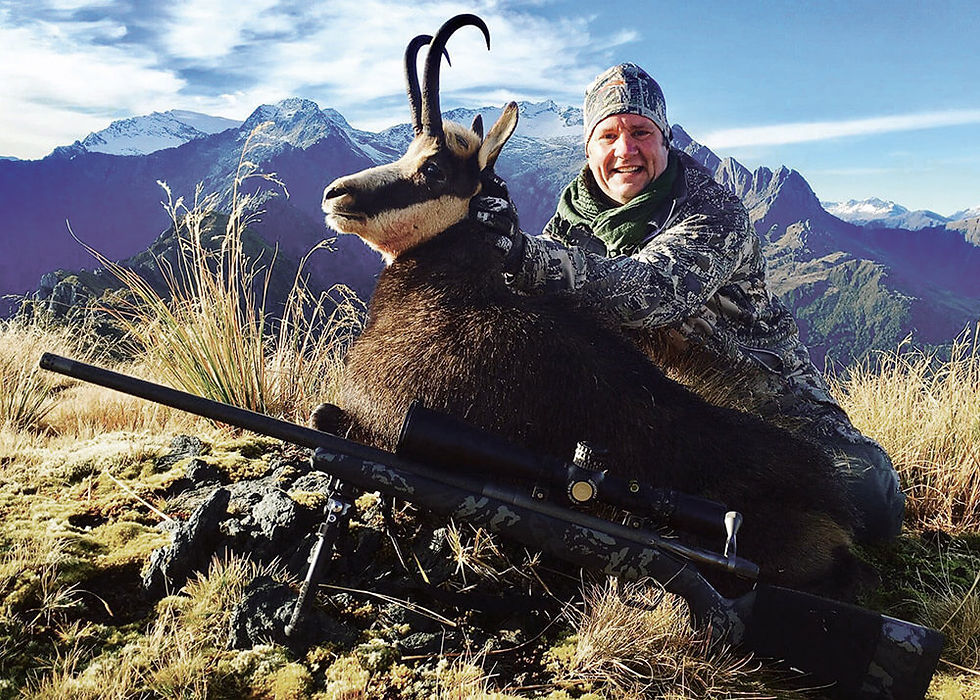
Chartreuse Chamois
DISTRIBUTION This chamois is found only on the Chartreuse massif of the northern French Alps in southeastern France. Geographically it is part of the "Chaines Subalpines Septentrionales" and is home to the "Regional Nature Park Chartreuse." The political region is called "Rhone-Alpes" and lies between the cities of Grenoble and Chambéry. Against the East and Southeast the wide valley of the Isere divides it from the high alpine Chain of Belledonne. In the southwest of the Chartreuse Massif the Isere river makes a sharp curve and flows into the Cluse de l'Isère towards the northwest. This is the southwestern limit of the Chartreuse Massif and its border towards the Vercors Massif.
STATUS Chartreuse Chamois have developed over the past decades, are now stable and increasing. The Authorities of the "Nature Park Chartreuse" have started a limited yearly hunting program.
COMMENTS Hunter/collectors hunting for this species of Chamois should be aware that France is host to three different Chamois species: Pyrenean Chamois, Chartreuse Chamois and Alpine Chamois.
SCI will only accept such Chamois from France as Chartreuse Chamois that have a Certificate of Take issued by the Authorities of the "Nature Park Chartreuse".
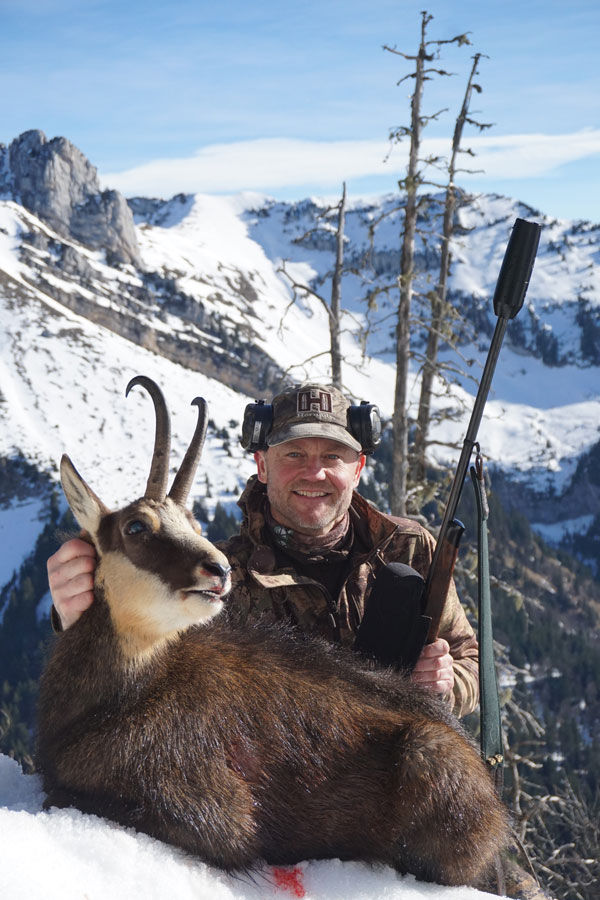
Lower Tatra Chamois
rupicapra rupicapra tatrica
DESCRIPTION Scientists separated the Tatra Chamois from the Alpine Chamois in 1972 because of its larger skull, its somewhat different coloration, and its different Ecological requirements. Its horns, however, are about the same size as those of the Alpine Chamois.
DISTRIBUTION Tatra Mountain range of Poland and Slovakia.
STATUS Stable populations with hunting quotas in Slovakia; completely protected in Poland

Pyrenean Chamois
DESCRIPTION (male) Shoulder height 29-30 inches (74-76 cm). Weight 55-90 pounds (25-41 kg).
Summer coat is reddish, turning brown in winter. Underparts are pale. Rump, throat, lower jaw and front of face are yellowish. Larger and darker than the Cantabrian chamois, with longer, thicker horns.
DISTRIBUTION Locally in the Pyrenees Mountains of northeastern Spain and southern France.
STATUS Stable, with numbers estimated at 20,000 in 1981.

If you are ever interested in Hunting the Chamois of the world reach out to us and we can put you in contact with some of our highly trusted outfitters all across the world!

Commentaires